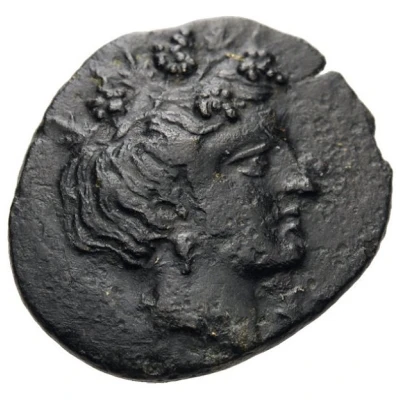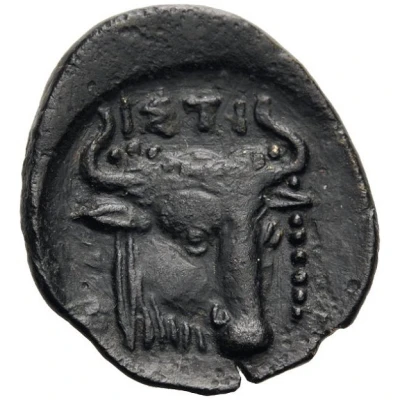


© Nomos AG
Chalkon 400 BC - 200 BC
| Bronze | 1.76 g | 12.0 mm |
| Issuer | Histaia (Euboia) |
|---|---|
| Type | Standard circulation coin |
| Years | 400 BC - 200 BC |
| Value | Chalkon (1⁄48) |
| Currency | Drachm |
| Composition | Bronze |
| Weight | 1.76 g |
| Diameter | 12.0 mm |
| Shape | Round (irregular) |
| Technique | Hammered |
| Demonetized | Yes |
| Updated | 2024-10-10 |
| Numista | N#190509 |
|---|---|
| Rarity index | 97% |
Reverse
Head and neck of bull to right, the head turned slightly toward the viewer and the horns adorned with a garland
Script: Greek
Lettering: ΙΣΤΙ
Interesting fact
The Chalkon coin was used as a form of currency in ancient Greece, specifically in the city-state of Histaia on the island of Euboia. It was made of bronze and had a distinctive design, featuring the head of a mythical creature called a chalkos, which was a type of wild goat. The coin was used for everyday transactions and had a relatively low value, but it was still an important part of the local economy. Despite its age, some Chalkon coins have survived to the present day and are now highly prized by collectors and historians.